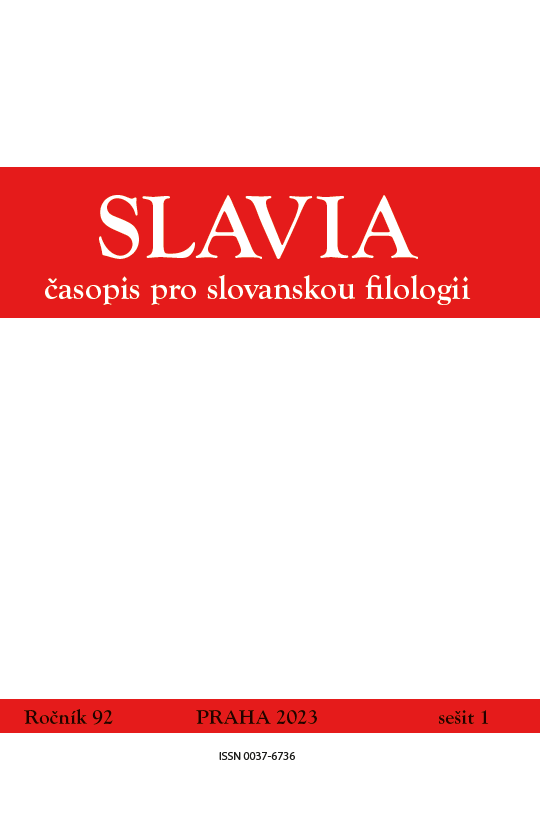Z badań nad wpływem ugrofińskim na prasłowiańską terminologię drzewną
Studies on the Finno-Ugric Influence on the Proto-Slavic Arboreal Terminology
Author(s): Krzysztof Tomasz WitczakSubject(s): Language studies, Theoretical Linguistics, Morphology, Semantics
Published by: AV ČR - Akademie věd České republiky - Slovanský ústav and Euroslavica
Keywords: arboreal terminology; etymology; borrowings; Finno-Ugric; language contact; Proto-Slavic; substrate; trees;
Summary/Abstract: The paper provides a critical analysis of eight Proto-Slavic lexical units belonging to general arboreal terminology which seem to represent Finno-Ugric substrate borrowings. The confrontation of the Slavic and Uralic (especially Finno-Ugric) lexical data suggests the substrate origin of the following items: PSl. *kora f. ‘bark’ (‹ FU. *kore ‘skin, bark’), PSl. *list? m. ‘leaf’ (‹ Finno-Volgaic *lešte ‘leaf’), PSl. *kyta f. ‘a green branch; a branch with leaves’ (‹ FU. *koča ‘branch of a coniferous tree’), PSl. *k?r? m. ‘shrub, bush’ (‹ Ur. *kur?/*kuri ‘bush, thick forest’), PSl. *kopa f. ‘clumb of trees’ (‹ FU. *kumpa ‘a small hill covered with vegetation in a swampy area’). Furthermore, three Proto-Slavic dendronyms should be added to the list of substrate borrowings of Finno-Ugric origin: PSl. *do? b? m. ‘oak’ (‹ FU. *toma-puwe ‘oak wood’), PSl. *molkyta f. ‘a kind of willow’ (‹ Ur. *malka ‘id.’) and PSl. *orkyta f. ‘a species of willow’ (‹ Ur. *ńork? ‘id.’, secondary ‘rod, branch, young shoot’). The fact that two Proto-Slavic terms denoting ‘a species of willow’ contain the same element *-kyta in the final part (probably identical to PSl. *kyta ‹ FU. *koča) suggests that Finno-Ugric people preceded the Slavs in collecting young, straight willow branches to use them for wicker. Similarly, the term for ‘oak’ seems to indicate that the Proto-Slavs owed their interest in oak wood as an excellent building material to the Finno-Ugrians. Thus, the Indo-Europeans who arrived in Eastern Europe from the Danube area took over certain terms from the native people of the region. These items then became an integral part of the Slavic vocabulary. With time, the unknown Finno-Ugric substrate which the Proto-Slavs replaced vanished completely, but not before leaving undeniable traces in the lexicon of all currently existing Slavic languages.
Journal: Slavia - časopis pro slovanskou filologii
- Issue Year: XCII/2023
- Issue No: 1
- Page Range: 1-17
- Page Count: 17
- Language: Polish
- Content File-PDF

